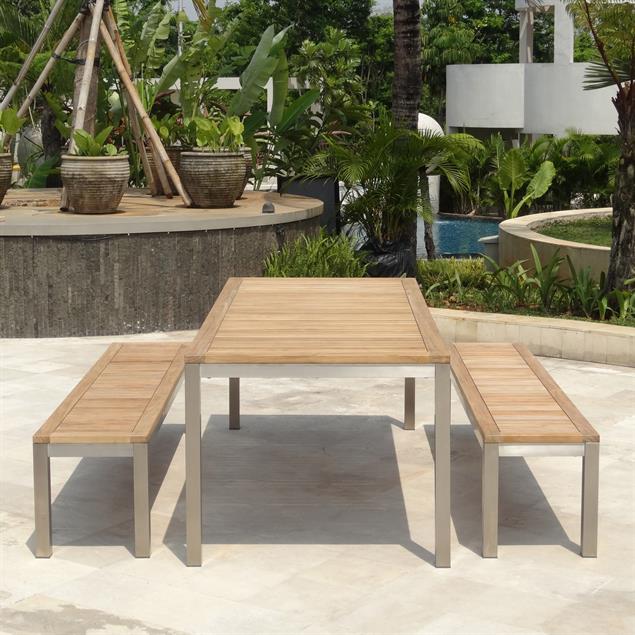Description
Characteristics of Teak
Teak furniture is an excellent choice for outdoor living and with regular maintenance will provide years of loyal service. PNZ offers an array of Golden Care products for protecting and retaining Natural teak as well as touch-up kits designed to match our teak finishes.
Natural Teak – Our Natural finish highlights the beauty and grain of solid teak. Due to natural variations in the wood, each product and finish may vary slightly. When exposed to sun and rain, the color of Natural teak will soften to a handsome silvery-grey shade depending on the amount of sun exposure.
Finished Teak – Our finished teak is created using a wire brush with a pigment-based finish. Imperfections such as hairline cracks may develop over time. If left uncovered, the finish will fade and wear through, exposing unfinished teak to the elements. Exposed teak will begin to acquire the beautiful silvery-grey patina that is typical of untreated teak. We recommend that these pieces be protected from incremental weather by our furniture covers.
Natural Teak (new)
Natural Teak (at 6 months)
Natural Teak (at 1 year)
Finished Teak – Weathered finish (new)
Finished Teak – Weathered finish (at 5 years)
Stainless Steel
Stainless steel is the generic name for a number of different steels used primarily for their resistance to corrosion. The one key element they all share is a certain minimum percentage of chromium of 10.5%. Although other elements, particularly nickel and molybdenum, are added to improve corrosion resistance, chromium is always the deciding factor. However, despite its various additions stainless steel still behaves as steel, and even the highly alloyed stainless steel grades such as 316 still contain a minimum of 62% iron.
PNZ manufactures using 304 grade stainless steel with an electro-polished (EP) finish brushed finish. Electro-polishing is widely used in the electronics, food and medical industries and on components for cruise ships and yachts, where a corrosion resistant, smooth and easy to maintain surface is of vital importance. Electro-polishing is an electrochemical process whereby the combination of an electrical current and a strong acid erodes the surface of the stainless steel substrate atom by atom. This process removes much of the iron from the surface of the steel, but leaves the chrome intact, resulting in more shiny, but much improved corrosion resistant surface.










